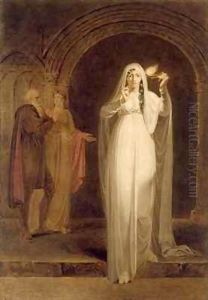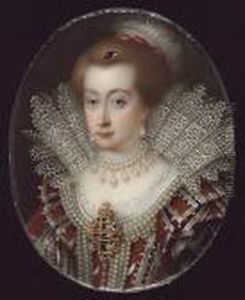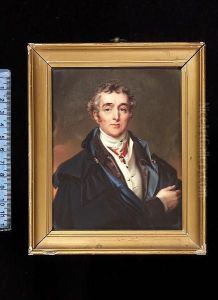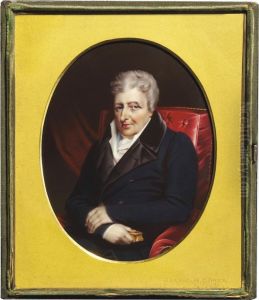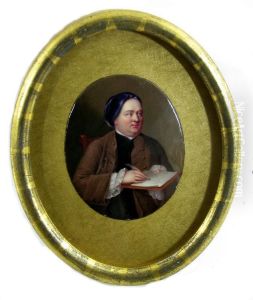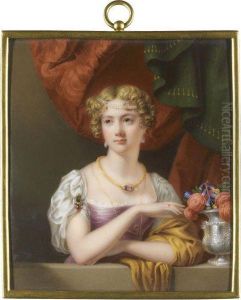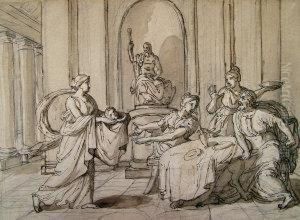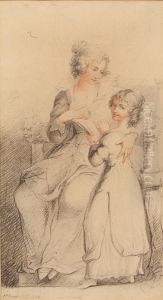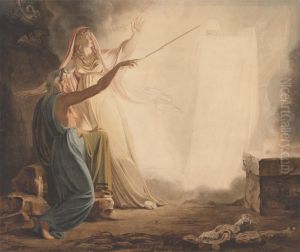Henry Pierce Bone Paintings
Henry Pierce Bone was an English enamel painter, born in 1779. He was part of a distinguished family of artists; his father, Henry Bone, was an acclaimed enamel painter as well, and it was under his guidance that Henry Pierce Bone honed his craft. Bone's early life was steeped in the artistic traditions of his family, and he quickly developed a passion for enamel painting, a medium known for its durability and vibrancy of color.
Henry Pierce Bone's career was marked by his dedication to portrait miniatures in enamel, following in the footsteps of his father's specialty. He became renowned for his detailed and vivid portrayals, which captured the essence of his subjects with remarkable accuracy and depth. Throughout the early 19th century, Bone received commissions from many notable figures of the time, which included members of the British royal family and aristocracy, as well as prominent literary and historical personalities. His works were celebrated for their exquisite detail and the skill with which he replicated the textures and hues of fabrics and jewels.
In addition to his portrait miniatures, Bone also produced larger enamel paintings, often historical in theme. These pieces were ambitious in scale and scope, showcasing his versatility and mastery over the medium of enamel. Despite the challenges associated with enamel painting, such as the need for precise timing and temperature control during the firing process, Bone's work exhibited an exceptional level of finesse and technical proficiency.
Bone's contributions to the art of enamel painting were recognized during his lifetime. He exhibited his works at the Royal Academy and other prestigious venues, earning accolades for his artistic achievements. His legacy, however, extends beyond his own body of work. Henry Pierce Bone played a significant role in the revival of enamel painting in the 19th century, inspiring a new generation of artists to explore and innovate within this challenging but rewarding medium.
Henry Pierce Bone passed away in 1855, leaving behind a rich legacy of artistic excellence. His works continue to be appreciated by art historians and collectors alike, serving as enduring examples of the heights that enamel painting can achieve. Through his dedication and skill, Bone not only contributed to the artistic heritage of his time but also ensured the survival and appreciation of enamel painting for future generations.
